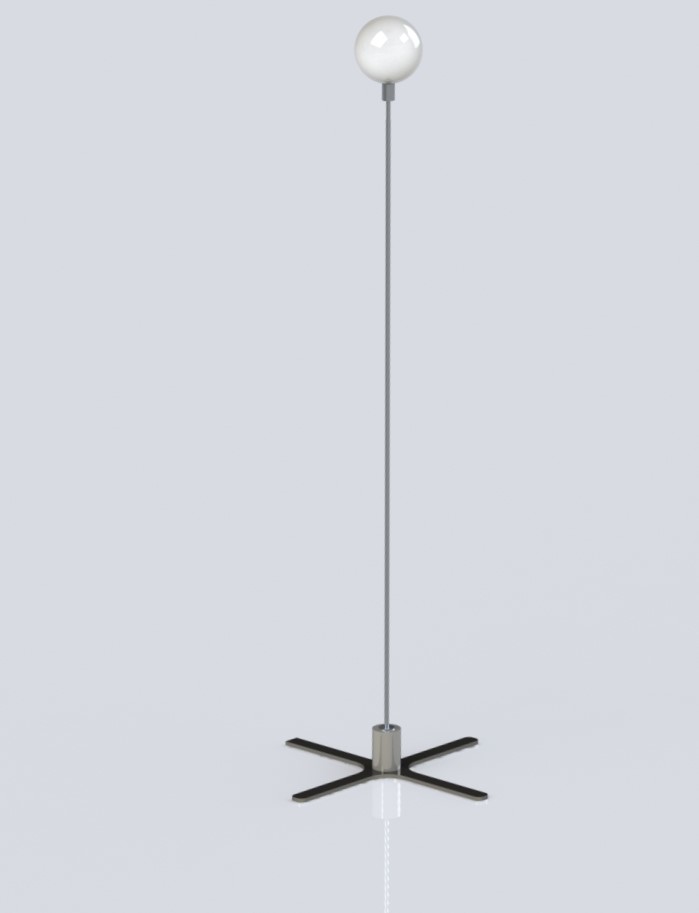Parking Assistance Device
Independent Consultant 2017-2018
In this project, I worked with a client to develop a proof of concept for his product idea, a device to assist with parking. The product was based on an orb which would alert the driver when they were in the right parking position. The scope of this project was to create a functioning prototype based on the client’s vision. As a consumer product, a further emphasis was placed on aesthetics as well as ease of use. Additionally, this prototype was intended to create material for the provisional patent filed by the client, which has since been approved. The patent information can be found here: #10,403,149. At the time I joined the project, the patent application had already been filed, and so my goal was to bring the client’s product vision to life, within the scope of the patent filing. Due to the confidential nature of this project, I can only share limited information and media.

Design Considerations
Following discussions with the client, the following goals were established:
- Create device that will react to a bump of a vehicle and flash / alert the driver
- Device should be able to be operated on a stand or while being hung from a ceiling.
- Device must visibly indicate to the driver that the vehicle has in position.
- Device must have a consideration for ease of use, both in daily use and in any maintenance
- Device must be adjustable in height when in the stand configuration
- Patent Considerations:
- Electronics must be contained in the orb
- Stand may use a spring as a means of returning the device to upright position after contact
- Device must make physical contact with car as trigger mechanism.
Design Process
I started first with prototyping sensor types. I tried several types of sensors to start, including resistive force pads, piezoelectric vibration sensors, limit switches and accelerometers. Each had their own drawbacks and advantages, which I compiled into an analysis for the client. Following this initial prototyping, as well as some discussions on patent viability with our patent attorney, I decided on a sensor.
I also started to come up with the physical implementation. This involved an analysis of possible heights that the orb needs to mounted at. The preferred height differed greatly vehicle and whether a user is parking head or tail-in. All these considerations affected the minimum and maximum height requirements, which were reflected in the stand design. To ensure adjustability, I determined that the stand must be able to change heights easily and with several positions. I also prototyped the other physical components such as the orb which housed the electronics and the stand design.
I initially tried to incorporate some more artistic pieces into the stand design– these were later axed by the client in favor of a simpler and cheaper design, which followed the patent specification more closely. We went through several proposed design versions before settling on an agreeable design by all parties. I then moved on to build a physical mockup of this finalized design. After protoyping all the components, I moved on to final prototype production. Whereas previous iterations had been solely concerned with functionality, I now needed to consider aesthetics, packaging, and integration. This prototype would be delivered to the client, and such a polished appearance was necessary.
This final prototyping step involved figuring out properly speccing parts, including:
- Properly specced batteries to power the electronics
- Finding compatible components with sufficiently low power requirements
- Finding the proper materials for parts
- For the pieces which could potentially touch the car, I wanted a material or coating which was durable enough to last under impact but soft enough to not damage the car under contact
- Base must be heavy enough to avoid tipping over, but light enough minimize package weight
Following these steps, I moved on to fabrication. I made the majority of the parts myself, using a vertical mill, making my own molds for the rubber pieces, etc. I did send out a part as well for the base, which was made out of thick steel in my prototype. After final assembly, I shared my work with my client, who was very satisfied with my work. From here, I then transitioned off the project, as the focus turned more towards production.
Takeaways
This project really gave me a good perspective on client-designer interactions. While other projects have been driven from an engineering perspective, this project was driven by a client who had a vision but wanted me to bridge the divide between idea and product. In all, I had significant back-and-forth with my client to make sure that my designs were conforming to their vision as well as also meeting all patent requirements. I had several proposals which were axed due to these concerns–and I was forced to start again with new changes. This was a good learning experience to me as I had to learn to understand the customer and client, as opposed to just building for my own vision.
Additionally, while the considerations to the patent were sometimes frustrating, I fully expect to have to work within a narrow design spec in the future. In that regard, this project helped me learn how to work within a project scope and to adjust my design based on feedback from a non-engineering perspective. This led me to develop a more flexible design processes, with a focus more on incremental progress versus huge updates at once. Additionally, the entire project was conducted remotely, as my client was in Michigan, while I was in California. This led me to put together regular progress updates, and also to focus on good documentation and communication for proposals, requests and feedback.